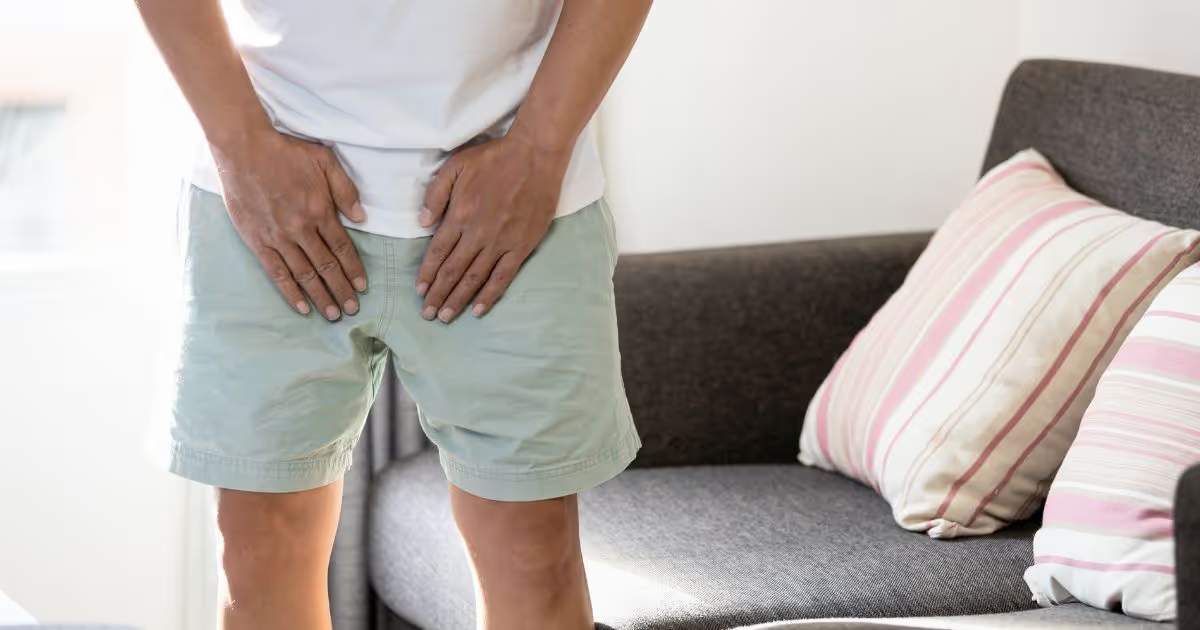Choose the content to read
- What is a groin strain?
- What are the causes of groin strains?
- How are groin strains diagnosed?
- How are groin strains treated?
- FAQ
- A note from MedPark's doctor
Groin Strains
A groin strain is an injury affecting the muscles in the groin. This condition is common among athletes. It occurs when one stretches the groin muscles beyond their limits, causing muscle fiber tears. A doctor may conduct a physical examination or request tests, like ultrasound, X-rays, or MRI, to diagnose a groin strain.
What is a groin strain?
A is an injury affecting the muscles in the groin. This condition is common among athletes. It occurs when one stretches the groin muscles beyond their limits, causing muscle fiber tears. These muscles are of three groups -- the lower abdominal, iliopsoas, and adductor muscle groups. They are responsible for tethering and connecting the lower abdomen to the tights.
It is essential to know the general mechanism of the injury to understand how a groin strain occurs. Muscles consist of numerous strands of muscle fiber. They elongate and press together when we move. Healthy muscles have plenty of flexibility. However, overtaxing the muscles causes them to stretch beyond their limits, leading to a muscle tear.
How many types of groin strains are there?
Muscle strains, including groin strains, can be categorized into three grades based on severity. Grade 1 groin strains are mild. Moderate groin strains are called grade 2. Severe groin strains are grade 3.
What are the causes of groin strains?
As mentioned, groin strains occur when muscles are stretched beyond their limits, leading to tearing or damage. Overstretching of groin muscles can result from sports injuries, direct impacts to the groin, or repetitive strain injuries. Playing hockey, soccer, football, or basketball can also raise the risk of developing groin strains.
What are the symptoms of a groin strain?
A groin strain manifests with sharp pain in the groin and may worsen with specific movements. The symptoms of groin strains include:
- Pain in the groin or inner thigh.
- Difficulty moving your leg or hip.
- Muscle spasms or tightness.
- Muscle weakness.
- Swelling.
How are groin strains diagnosed?
A doctor conducts a physical exam to diagnose a groin strain, examining the injured groin and inquiring about the symptoms and the activity you were doing before the onset of pain. In addition to a physical exam, the doctor may order tests, such as ultrasound, X-rays, or MRI, to check for tears, injuries, fractures, or internal bleeding.
How are groin strains treated?
The RICE method is a home remedy for a groin strain. RICE methods include:
- Rest: Avoid aggravating groin muscle damage by avoiding activities that impact them directly.
- Ice: On the first day of an injury, apply an ice pack or cold compress for 10 to 15 minutes every hour. Wrap the ice pack in a towel or washcloth to avoid direct skin contact. After the first day, apply an ice pack once every three to four hours.
- Compression: Swelling can be relieved by reducing blood flow to the injured groin muscles with compression. Options for compression include a compression bandage and compression shorts or pants.
- Elevation: Lie down and lift your leg and lower trunk above the plane of your heart if possible. Use pillows, blankets, or cushions to support your legs.
Using crutches or a walker can facilitate walking or mobility in the first few days.
Surgical procedures
While surgery for a groin strain is uncommon, patients with grade 3 strains may require surgical intervention to mend torn muscles or reattach tendons or ligaments to the bones. Seeking advice from a physician can assist in identifying the most advantageous surgical approach.
Can medications be used to treat groin strains?
A doctor may prescribe over-the-counter NSAIDs (such as aspirin, ibuprofen, or naproxen) to reduce pain and swelling. However, avoid taking NSAIDs for over ten consecutive days without consulting a doctor.
Can a groin strain be prevented?
Warming up the muscles or doing a gentle activity to get your body moving before exercising can help prevent a groin strain. In addition, stretching the leg and core muscles can also add flexibility, preventing injuries in those areas.
How long does it take for a groin strain recovery?
The recovery time of a groin strain varies according to how severe it is. Usually, grades 1 and 2 groin strains require about a month or two to recover. As for grade 3 or severe groin pain, the recovery period can take four months or more.
When should I see a doctor or go to an emergency department?
If intense pain develops in or around the groin or persists longer than a few weeks of home remedy, you should seek medical attention. If you have bleeding in or around the groin or cannot move the leg or hip, swelling persists or worsens, discoloration occurs on the skin in the groin area, or your legs are numb, you should go to the emergency department as soon as possible.
What should I ask my doctor during an appointment?
You are encouraged to ask your doctor about the grade of your groin strain, recommended treatment or home remedies, expected recovery period, and activities to avoid while recovering.
FAQ
- Is a groin strain and a torn muscle the same?
A strained, pulled, or torn groin muscle is the same condition with the same symptoms and treatments. - Can I walk with a groin strain?
You can still walk if you have a grade 1 groin strain. You should avoid running or exercising while recovering from a groin strain. Playing sports or exercising before the muscles have mended increases the chance of re-injury. - Is a groin strain the same as an athlete’s hernia?
A groin strain and an athlete’s hernia are different. Groin strains are due to torn or overstretched groin muscles, while sports hernias occur when the ligament and fascia that attach the abdominal muscles to the pelvic bone weaken or tear.
A note from MedPark's doctor
Groin strains are injuries to the groin muscles. While common among professional athletes in sports like hockey or football, they can affect anyone. Treatment options for groin strains range from home remedies, such as the RICE method, to medications and surgery. Recovery times for groin strains vary depending on the severity of the injury. It is important not to rush back to activity before fully recovering, as returning to exercise too soon can exacerbate the condition.







